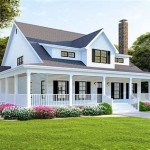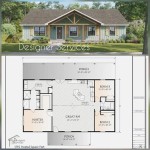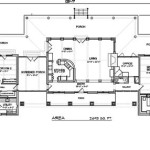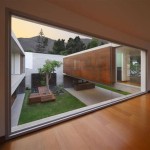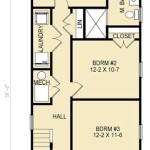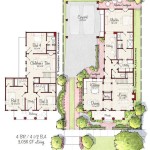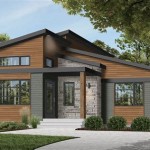Home Plans with Garage in Back: A Comprehensive Guide
For homeowners seeking a blend of functionality and aesthetic appeal, the placement of a garage can significantly impact the overall design and livability of a house. While front-facing garages are a common sight, positioning the garage in the back offers a distinct set of advantages that cater to various needs and preferences. This article explores the benefits, considerations, and design elements associated with home plans featuring rear-facing garages.
Enhanced Curb Appeal and Neighborhood Harmony
A rear-facing garage can dramatically elevate a home's curb appeal. By concealing the garage doors from the street view, the front facade becomes a more inviting and aesthetically pleasing focal point. This architectural choice often creates a more harmonious integration with the neighborhood aesthetic, especially in areas with architectural guidelines or where a cohesive streetscape is desired. The absence of a prominent garage at the front of the house allows for greater flexibility in landscaping and garden design, enhancing the visual appeal of the property.
Improved Privacy and Sound Insulation
One of the primary advantages of a rear-facing garage is the enhanced privacy it offers. With the garage situated away from the street, noise from vehicle traffic, deliveries, and garage activities is reduced, promoting a quieter and more peaceful living environment. This is particularly beneficial for homeowners who value tranquility and seek to minimize disruptions to their daily life. The separation between the home and the garage also contributes to better sound insulation, as noise from the garage is less likely to penetrate the living spaces.
Versatile Design Options and Enhanced Functionality
The rear-facing garage layout opens up a world of possibilities for home design. The absence of a garage at the front allows for more creative architectural solutions. For example, homeowners can opt for wider front porches, welcoming entrances, or expansive windows that maximize natural light and create a more inviting atmosphere. The rear garage setup also allows for a more seamless integration between interior and exterior living spaces. A covered patio or outdoor living area can be seamlessly extended from the garage, creating a flexible and inviting space for entertaining, relaxation, or simply enjoying the outdoors.
Considerations for Rear-Facing Garages
While rear-facing garages offer numerous benefits, there are important considerations to keep in mind before deciding on this design approach. The first factor is the shape and size of the property. A rear-facing garage may not be ideal for smaller lots, as it could limit space for outdoor living or landscaping. Additionally, the location of utility lines and access points should be carefully assessed to ensure a smooth and efficient construction process. Access to the rear of the property should be secured, and potential issues with privacy and security should be addressed. It's essential to consult with an architect or builder to determine if a rear-facing garage is feasible and to discuss the necessary design adjustments for your specific needs and property characteristics.
Design Elements for Rear-Facing Garages
To maximize the functionality and aesthetics of a rear-facing garage, there are specific design elements worth considering.
- Garage Doors: Choosing aesthetically pleasing garage doors is crucial, as they will be a prominent feature in the rear of the home. Consider using custom-made or high-quality doors with an architectural style that complements the overall design of the house.
- Side Entry: A side entry door can provide direct access to the garage from the backyard or side yard, eliminating the need to walk through the house to reach the garage. This is particularly useful for bringing in groceries, tools, or outdoor equipment.
- Exterior Lighting: Adequate lighting is vital for safety and security. Install motion-sensing lights around the garage doors and entranceways, ensuring visibility at night.
- Landscaping: Landscaping can significantly enhance the look and feel of the garage area. Consider planting trees or shrubs to provide privacy and soften the visual impact of the garage structure.
- Garage Conversion: If space is limited, consider designing the garage with the option of future conversion to a living space. Ensure proper insulation, ventilation, and electrical wiring to facilitate a seamless transition if needed.
By carefully planning and incorporating these design elements, homeowners can ensure that their rear-facing garage is both functional and aesthetically pleasing, seamlessly integrating with the overall design of the home and enhancing its overall value and livability.

Craftsman Style 2 Story House Plan W Rear Garage

Classic Southern Home Plan With Rear Entry Garage 56455sm Architectural Designs House Plans

Rear Garage House Plans

Floor Plan Friday Garage On The Rear

Narrow Home Plan With Rear Garage 69518am Architectural Designs House Plans

House Plans The Chaucer Home Plan 1379

House Plans With Rear Entry Garages Or Alleyway Access

2 Bed Craftsman Starter Home Plan With Garage In Back 51848hz Architectural Designs House Plans
4 Bedrm 2750 Sq Ft Acadian House Plan 141 1082

Plan 28933jj Modern Farmhouse With Attached Garage In Back 1809 Sq Ft

